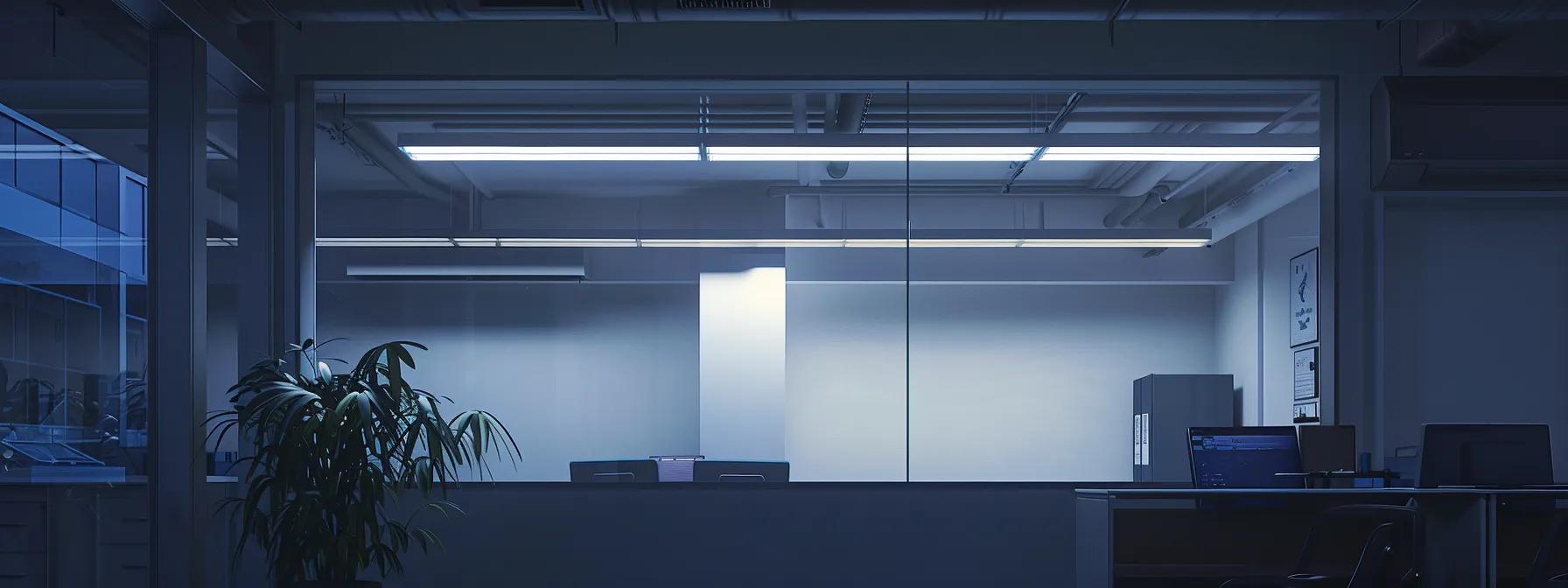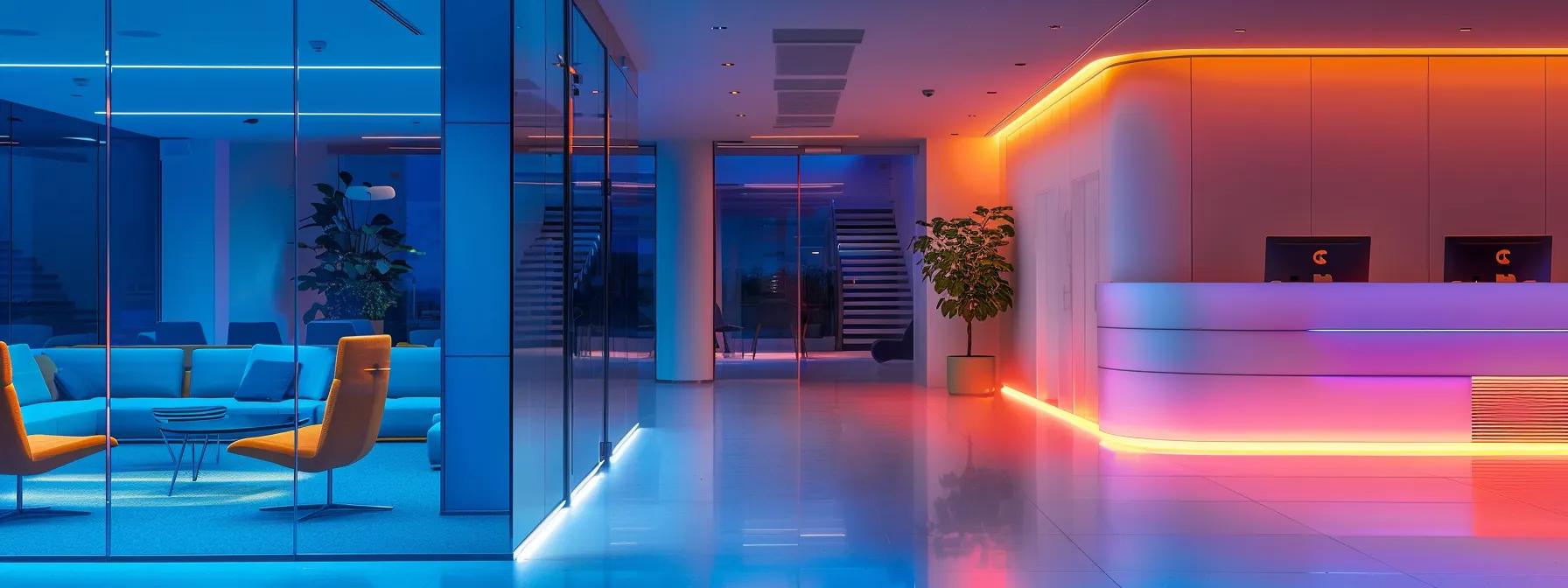Enhance Sustainability Through Effective Lighting Retrofit
Lighting retrofit projects are quickly becoming a cornerstone of sustainable building practices. By updating traditional lighting systems to energy‐efficient LED solutions, homeowners and commercial clients alike can improve energy management, reduce greenhouse gas emissions, and enhance environmental performance. Licensed electrical contractor Doctor Electric, serving Lexington, Kentucky and surrounding areas, leads these efforts by offering safe, code-compliant lighting retrofit solutions that reduce electrical consumption while promoting sustainability.
1. Reduced Energy Consumption – Lowering Electricity Usage Through LED Retrofits

Reduced energy consumption is achieved by replacing outdated lighting systems with highly efficient LED retrofit lamps that require significantly less electricity to produce the same brightness level. LED retrofit lamps use approximately 60–70% less power than conventional fluorescent lamps, as confirmed by a study published in the International Energy Agency Report (2021). This efficiency means lower energy bills and a reduction in cumulative energy demand.
Doctor Electric’s retrofit services incorporate LED lighting solutions that optimize energy star ratings, reduce wattage without compromising brightness, and improve facility management by ensuring sustained efficiency. The implementation of lighting control systems integrated with LED retrofits further maximizes energy savings, resulting in lower peak demands and improved energy management.
By utilizing LED technology and advanced controls, customers can see immediate operational savings, along with a reduction in carbon footprint and a measurable decrease in their overall energy consumption.
2. Improved Resource Efficiency – Optimizing Material and Operational Outputs

Improved resource efficiency occurs when lighting retrofits reduce overall material usage during production and lower waste generation throughout the lamp’s lifecycle. LED retrofit components are designed with longevity in mind, typically providing lifespans exceeding 50,000 hours, which reduces the frequency of replacements and subsequent waste. This systematic improvement in efficiency minimizes the demand for raw materials, lowers disposal volumes, and significantly extends operational longevity.
According to a 2020 analysis by the U.S. Department of Energy, LED retrofits can reduce maintenance and replacement costs by up to 75%, thereby optimizing resource usage and reducing disruptions in operations. Doctor Electric integrates this philosophy by responsibly retrofitting electrical systems for homeowner and commercial properties, ensuring compliance with sustainability standards and boosting resource efficiency.
The focus on resource optimization not only preserves natural resources but also contributes to sustainable operational practices, reducing the environmental footprint of lighting infrastructure.
3. Lowered Greenhouse Gas Emissions – Mitigating Climate Change Impact
Lowered greenhouse gas emissions are a critical benefit of lighting retrofit projects because energy-efficient LED lighting significantly reduces electricity demand from fossil-fuel-based generation. By using less power, buildings emit fewer carbon dioxide equivalents (CO₂e), crucial for mitigating climate change. A study from Energy Policy (2019) demonstrates that switching to LED retrofits can cut related CO₂ emissions by nearly 40% compared to conventional lighting.
Doctor Electric ensures that every retrofit conforms to industry standards, promoting lighting control systems and dimming features that further cut energy use and emissions. For instance, retrofitting a commercial office with LED lamps routinely leads to a reduction of over 5 metric tons of CO₂e per year—a powerful statement for sustainable practice.
This reduction in greenhouse gas emissions also fosters better corporate social responsibility, positioning property owners as environmental leaders while complying with stricter building codes.
4. Enhanced Air Quality – Minimizing Pollutants and Light Pollution
Enhanced air quality is achieved by lowering the heating emissions generated by outdated, inefficient lighting systems. Conventional fluorescent lighting can produce excessive heat and emit volatile organic compounds (VOCs) over time, whereas LED retrofit lamps operate cooler and with negligible pollutant output. Reduced heat production also mitigates urban heat island effects, which in turn improves neighborhood air quality.
Research from the Environmental Science & Technology Journal (2020) indicates that building retrofits incorporating LED technology can lower ambient temperatures, leading to a drop in local air pollutants by nearly 15%. Doctor Electric’s expertise in installing LED retrofit lamps ensures that lighting systems are optimized not only for energy performance but also to minimize light pollution that interferes with natural ecosystems and human circadian rhythms.
By reducing both light and heat pollution, these retrofits indirectly support healthier living environments and align with best practices for sustainable urban design.
5. Improved Lifecycle Performance – Extending Lifespan and Reducing E-Waste
Improved lifecycle performance is demonstrated through the use of LED retrofit lamps, which often offer lifespans that are 3–5 times greater than older lighting systems. This extended lifespan decreases the frequency of replacements, consequently reducing electronic waste (e-waste) and lowering resource depletion. Research published by the Journal of Cleaner Production (2021) found that retrofitted LED systems contribute to a 50% reduction in waste generation over a 10-year period.
When Doctor Electric retrofits a property, the installation of robust, long-lasting LED systems not only cuts the cost per lumen over time but also minimizes the environmental impact associated with regular lamp disposal. Reduced downtime and fewer replacements lead to increased operational continuity and contribute to significant waste reduction.
The enhanced durability and consistent performance of LEDs ensure that facilities maintain a lower total cost of ownership while fulfilling sustainability objectives.
6. Real-World Energy Savings – Verified Case Studies and Return on Investment
Real-world energy savings are supported by numerous case studies that demonstrate measurable improvements after lighting retrofits. For example, a retrofit project in a mid-sized commercial building recorded an energy reduction of 65% and a payback period of less than 3 years, as reported by the U.S. Green Building Council (2021). These savings are not only reflected in lower utility bills but also in the form of reduced maintenance and operational costs.
Doctor Electric’s projects consistently deliver these benefits by utilizing LED retrofit lamps alongside advanced lighting control systems. The integration of occupancy sensors and smart dimmers ensures that energy is used only when necessary, providing a measurable boost in energy efficiency while supporting sustainability goals.
Through proven savings and short payback periods, building owners can confidently invest in retrofitting projects that deliver substantial environmental and economic returns.
7. Strategic Sustainability Initiatives – Integrating Retrofit with Broader Green Programs
Strategic sustainability initiatives merge the benefits of lighting retrofits into a larger environmental framework that includes energy management, emissions reduction, and resource conservation. By integrating retrofitting projects with green building certifications, companies and municipalities can achieve enhanced sustainability ratings and further reduce their environmental footprints. A study featured in the Building Research & Information Journal (2020) revealed that comprehensive retrofit programs could improve overall sustainability scores by over 20%.
Doctor Electric helps clients incorporate lighting retrofits into broader green initiatives, designing retrofit projects that synchronize with renewable energy programs, energy star standards, and corporate social responsibility goals. This coordinated approach ensures that each project contributes to a cohesive environmental strategy, offering long-term benefits such as reduced electricity consumption, improved indoor light quality, and lower greenhouse gas emissions.
The integration of these retrofits establishes a roadmap for environmental leadership, demonstrating that sustainable upgrades can be both economically and ecologically beneficial.
What is the primary environmental benefit of LED retrofits?
LED retrofits drastically reduce energy consumption and lower CO₂ emissions.
How do LED retrofits improve resource efficiency?
They extend fixture lifespans and reduce replacement rates, cutting down on waste.
Can lighting retrofits help reduce light pollution?
Yes, modern LED designs incorporate controlled light distribution to minimize outdoor spill.
What role does smart control technology play in retrofits?
Smart controls tailor lighting usage to real-time needs, further reducing energy waste.
How quickly can energy savings be observed after a retrofit?
Savings are often measurable within the first year, with a payback period of under three years in many cases.
Lighting retrofits represent a powerful lever for environmental sustainability. They improve energy savings while reducing both emissions and resource consumption. Projects executed by experts like Doctor Electric demonstrate real-world benefits through reduced energy bills and lower environmental footprints. Embracing such retrofits is essential for advancing green initiatives and ensuring a sustainable future.

